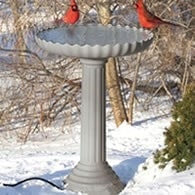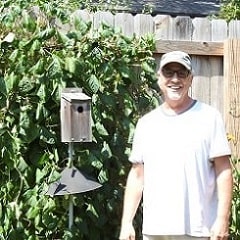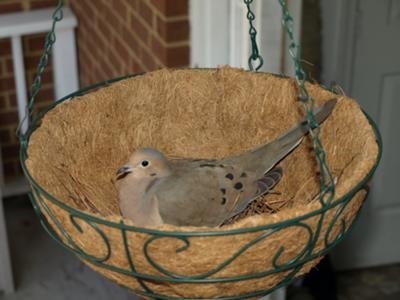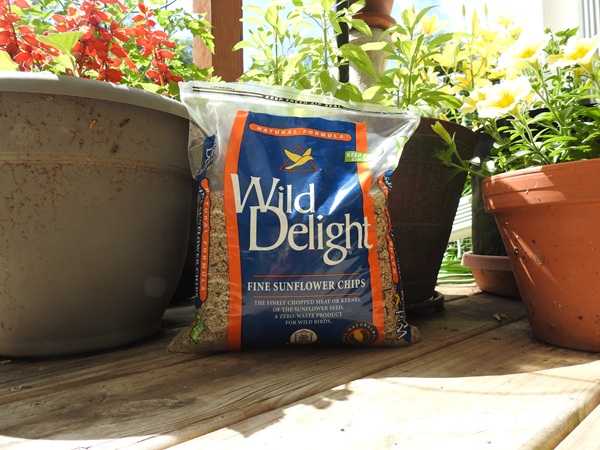American Robin Nest: Master Builders of the Bird World
Here, We'll take a look at the step-by-step process of construction, common locations, and why these birds sometimes build more than one before laying eggs.
How American Robins Build Their Nest
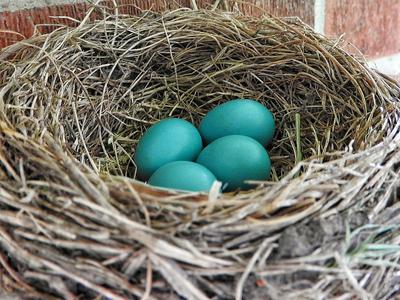
Nest building is a task undertaken entirely by the female robin. While the male remains nearby to defend the territory, the female selects materials and assembles them into a durable and functional structure.
The process typically takes between two to six days, and the finished product follows a consistent design, a deep, round cup that provides stability and insulation.
Stages of Nest Construction
1. Foundation and Outer Structure
The nest begins with a base of twigs, coarse grass, and small roots, which serve as the structural framework.
2. Reinforcement with Mud
One of the most distinctive features of this birds home is the use of mud as a binding agent.
The female gathers mud in her beak and spreads it along the inner walls of the nest, cementing the twigs and grass together.
This step makes the abode resistant to wind and rain while also helping it retain its shape.
Without access to mud, a robin may struggle to create a stable structure.
In particularly dry conditions, some robins have been observed using moist soil or even wet leaves as an alternative.
3. Soft Inner Lining
Once the structure is stable, the robin lines the inside with softer materials such as fine grass, moss, and animal hair.
This lining ensures that the eggs and nestlings have a cushioned, insulated surface to rest upon, regulating temperature and providing comfort.
4. Shaping the Cup
To finalize the structure, the female robin presses her breast against the interior, molding it into a perfect bowl shape.
This shaping process ensures that the depth is deep enough to cradle the eggs securely while still allowing easy access for incubation and feeding.
The whole Robin nest cycle takes about 4 weeks from building to fledging young.
Where Robins Build Their Nests
American robins are adaptable in their nest placement, choosing locations that offer stability, protection, and some degree of cover.
Their preferred sites include both natural and man-made structures, demonstrating their ability to thrive in various environments.
Why Do Robins Rebuild for Second Broods?
Unlike some birds that reuse their old nests, American robins typically build a new nest for each brood.
This behavior serves several purposes including sanitation, structural integrity, and predator avoidance.
Building Multiple Nests Before Laying Eggs
Some female robins build more than one nest before deciding where to lay their eggs. This behavior, known as nest sampling, is thought to serve several purposes.
By constructing multiple nests, the female may be testing different sites to determine which offers the best protection from predators and environmental hazards.
In some cases, this could also serve as a predator distraction strategy, making it harder for potential egg and nestling raiders to locate the real home.
Another reason a robin might abandon an initial site is structural weakness.
If it does not hold together well, especially if mud is scarce, the female may abandon it in favor of a more stable structure.
While not all robins exhibit this behavior, it is more commonly observed in areas where building failure is frequent due to predation or environmental factors.
Threats
Despite their meticulous construction, robins face numerous threats such as predation, human activity, and severe weather conditions.
Red-shouldered Hawks have attack many of these birds around my home.
Conclusion
The American robin's nest is an intricate and beautifully crafted structure that stands as a testament to the adaptability and resourcefulness of these birds.
Built with a mix of instinct and precision, they strike the perfect balance between strength, function, and comfort.
For those who encounter one around their home, the best approach is to observe from a distance and allow these skilled builders to continue their work undisturbed.
It's not uncommon for these bird to swoop down towards humans if they get too close to their young. Be careful and Happy birding.


